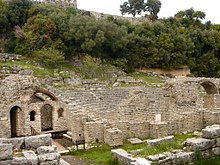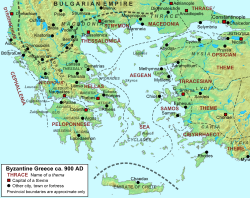Epirus (Roman province)
| |||||||||||||||||||||||||||||||||||||||||||||
Read other articles:

Disambiguazione – Se stai cercando altri significati, vedi Amore e Psiche (disambigua). Amore e Psiche, gruppo scultoreo di Canova Amore e Psiche sono i due protagonisti di una nota storia narrata da Apuleio all'interno della sua opera Le Metamorfosi, anche se è considerata risalire ad una tradizione orale antecedente all'autore. Nella vicenda narrata da Apuleio, Psiche, mortale dalla bellezza eguale a Venere, diventa sposa di Amore-Cupido, senza, tuttavia, sapere chi sia il marito, che le si…

† Палеопропитеки Научная классификация Домен:ЭукариотыЦарство:ЖивотныеПодцарство:ЭуметазоиБез ранга:Двусторонне-симметричныеБез ранга:ВторичноротыеТип:ХордовыеПодтип:ПозвоночныеИнфратип:ЧелюстноротыеНадкласс:ЧетвероногиеКлада:АмниотыКлада:СинапсидыКласс:Мл�…

Bendera Venezuela adalah bendera negara pengeluar minyak mentah Venezuela. Bendera kuning-biru-merah ini mengandungi delapan bintang putih di garisan tengahnya yang berwarna biru. Rasio bendera: 2:3 lbsBendera di duniaBendera negara berdaulat · Daerah dependensiAfrika Afrika Selatan Afrika Tengah Aljazair Angola Benin Botswana Burkina Faso Burundi Chad Eritrea Eswatini Etiopia Gabon Gambia Ghana Guinea Guinea Khatulistiwa Guinea-Bissau Jibuti Kamerun Kenya Komoro Republik Demokratik Kongo …

City in Illinois, United StatesWoodstockCityThe landmark Woodstock Opera House building in historic downtown Woodstock FlagSealLogoMotto(s): True to Its Past; Confident of Its FutureLocation of Woodstock in McHenry County, Illinois.WoodstockShow map of IllinoisWoodstockShow map of the United StatesCoordinates: 42°18′53″N 88°26′51″W / 42.31472°N 88.44750°W / 42.31472; -88.44750CountryUnited States StateIllinois CountyMcHenryTownshipsDorr, Greenwood, Hartla…
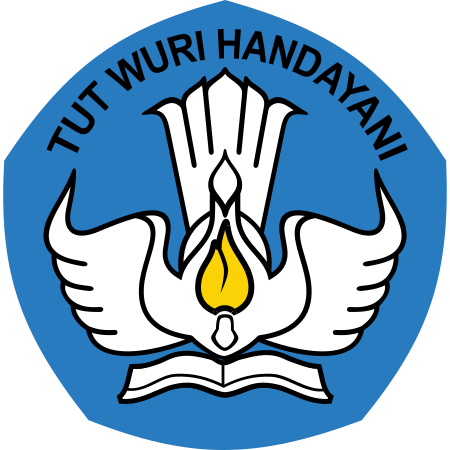
Untuk pengertian sekolah dasar secara umum, lihat Sekolah dasar. Artikel ini tidak memiliki referensi atau sumber tepercaya sehingga isinya tidak bisa dipastikan. Tolong bantu perbaiki artikel ini dengan menambahkan referensi yang layak. Tulisan tanpa sumber dapat dipertanyakan dan dihapus sewaktu-waktu.Cari sumber: Sekolah dasar Indonesia – berita · surat kabar · buku · cendekiawan · JSTORBagian dari seriPendidikan di Indonesia Kementerian Pendidika…

1872 painting by Alfred Sisley This article needs additional citations for verification. Please help improve this article by adding citations to reliable sources. Unsourced material may be challenged and removed.Find sources: Ferry to the Ile-de-la-Loge – Flood – news · newspapers · books · scholar · JSTOR (May 2023) (Learn how and when to remove this message) Ferry to the Ile-de-la-Loge – FloodArtistAlfred SisleyYear1872MediumOil on canvasLocationNy …
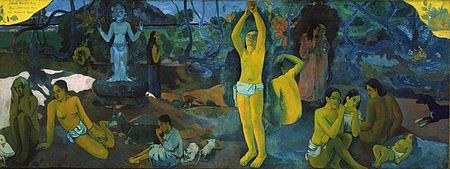
Частина серії проФілософіяLeft to right: Plato, Kant, Nietzsche, Buddha, Confucius, AverroesПлатонКантНіцшеБуддаКонфуційАверроес Філософи Епістемологи Естетики Етики Логіки Метафізики Соціально-політичні філософи Традиції Аналітична Арістотелівська Африканська Близькосхідна іранська Буддійсь…

Pesawat ruang angkasa TKS (Rusia: Транспортный корабль снабжения, Transportnyi Korabl 'Snabzheniia, Transportasi Pasokan Spacecraft,[1] Indeks Grau 11F72) adalah wahana antariksa Soviet penerbangan pada akhir tahun 1960 memasok ke stasiun ruang angkasa militer Almaz. Pesawat ruang angkasa ini dirancang untuk penerbangan pemasok kargo crewed atau otonom uncrewed, namun tidak pernah digunakan secara operasional dalam peran yang dimaksudkan - hanya empat tes misi…

يفتقر محتوى هذه المقالة إلى الاستشهاد بمصادر. فضلاً، ساهم في تطوير هذه المقالة من خلال إضافة مصادر موثوق بها. أي معلومات غير موثقة يمكن التشكيك بها وإزالتها. (نوفمبر 2019) ريكوبا سودأمريكانا 2008 تفاصيل الموسم ريكوبا سودأمريكانا النسخة 16 المنظم كونميبول البطل بوكا جون�…

جزء من سلسلة مقالات حولالإسلام والأديان الأخرى مع الأديان الإبراهيمية اليهودية المندائية المسيحية المورمونية البروتستانتية مع الديانات غير الإبراهيمية الديانات العربية قبل الإسلام الهندوسية الجاينية السيخية مواضيع مرتبطة الردة إزدراء الأديان التحول الديني الإسلام ومع…

BördekreisKreisCountry JermanNegara bagianSaxony-AnhaltDisbanded2007-07-01Ibu kotaOscherslebenLuas • Total872,4 km2 (3,368 sq mi)Populasi (2002) • Total78.662 • Kepadatan0,0.090/km2 (0,023/sq mi)Zona waktuUTC+1 (CET) • Musim panas (DST)UTC+2 (CEST)Pelat kendaraanBÖSitus webhttp://www.boerdekreis.de Bördekreis adalah sebuah Landkreis (Kabupaten) di sebelah barat Sachsen-Anhalt, Jerman. lbsSachsen-AnhaltLandkreis(Dist…

House of Assembly of the Virgin Islands5th House of AssemblyTypeTypeUnicameral SovereignMonarch of the United KingdomEstablished1950LeadershipSpeakerCorine George-Massicote since 26 May 2022 SpeakerStacy Mather, Progressive Virgin Islands Movement since 18 May 2023 PremierNatalio Wheatley, Virgin Islands Party since 5 May 2022 Leader of the OppositionRonnie Skelton, Progressive Virgin Islands Movement since 27 April 2023 StructureSeats15Political groupsGovernment (7) VIP (7) O…
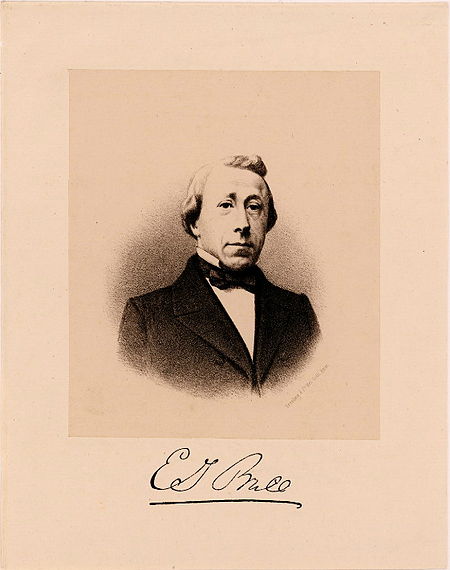
Dutch international academic publisher Brill PublishersParent companyDe Gruyter BrillFounded1683; 341 years ago (1683)FounderJordaan LuchtmansCountry of originNetherlandsHeadquarters locationLeidenDistributionTurpin Distribution[1]Publication typesBooks, academic journalsImprintsGlobal Oriental, Hotei Publishing, Brill Nijhoff, Brill Hes & De Graaf, Brill Rodopi, Brill Wageningen AcademicOfficial websitebrill.com Brill Academic Publishers, also known as E. J. Brill,…

System of mountain ranges in Central Asia Tianshan redirects here. For other uses, see Tianshan (disambiguation). This article may require copy editing for grammar, style, cohesion, tone, or spelling. You can assist by editing it. (July 2023) (Learn how and when to remove this message) Tian ShanTengri Tagh, Tengir-Too, 天山The Tian Shan range on the border between China, Kazakhstan and Kyrgyzstan with Khan Tengri (7,010 m) visible at centerHighest pointPeakJengish ChokusuElevation7,4…

Artikel ini membutuhkan rujukan tambahan agar kualitasnya dapat dipastikan. Mohon bantu kami mengembangkan artikel ini dengan cara menambahkan rujukan ke sumber tepercaya. Pernyataan tak bersumber bisa saja dipertentangkan dan dihapus.Cari sumber: CTV Television Network – berita · surat kabar · buku · cendekiawan · JSTOR CTV Television NetworkLogo CTV Sejak 2018Diluncurkan1 Oktober 1961PemilikCTV Inc. (Bell Media)SloganCanada's Most Watched NetworkNegara&…

Политические репрессии в Башкирской АССР (баш. Башҡортостанда сәйәси репрессиялар) — меры государственного воздействия, включающие различные виды наказаний и правоограничений, применявшиеся в Башкирской АССР к гражданам по политическим мотивам в рамках борьбы с «вреди…

Asian Games competition Men's javelin throw at the 2022 Asian GamesVenueHOC StadiumDate4 October 2023Competitors15 from 11 nationsMedalists Neeraj Chopra India Kishore Jena India Genki Dean Japan← 20182026 → Athletics at the2022 Asian GamesTrack events100 mmenwomen200 mmenwomen400 mmenwomen800 mmenwomen1500 mmenwomen5000 mmenwomen10,000 mmenwomen100 m hurdleswomen110 m hurdlesmen400 m hurdlesmenwomen300…

Major campaign of the Seven Years' War See also: Anglo-Spanish War (1762–1763) See also: Fantastic War Spanish invasion of Portugal (1762)Part of the Fantastic WarWilliam, Count of Schaumburg-Lippe, generalissimus of the Anglo-Portuguese forces that thrice defeated the Spanish and French offensives against Portugal.Painting by Joshua Reynolds.Date5 May — 24 November, 1762LocationNorth and East Portugal, SpainResult Portuguese and English victory[Note A] Invasion thrice defeated[Note B] Destr…

Italiani di Odessa †Mappa dell'Ucraina con Odessa, che è segnata con un pallino rosso Luogo d'origine Italia Periodoinizio 1200 - circa 1920 LinguaItaliano, russo, ucraino ReligioneCattolicesimo Gruppi correlatiItaliani di Crimea Distribuzione Ucrainaestinti Manuale Gli italiani di Odessa sono stati una minoranza etnica un tempo residente a Odessa, città dell'Ucraina meridionale, sul mar Nero. Indice 1 Storia 2 Note 3 Bibliografia 4 Voci correlate 5 Collegamenti esterni …

تصفيات بطولة أمم أوروبا 2016 المجموعة دمعلومات عامةالرياضة كرة القدم الاتحاد الاتحاد الأوروبي لكرة القدم الفئة كرة القدم للرجال جزء من تصفيات بطولة أمم أوروبا 2016 الفترة 2016 البداية 2014 — 7 سبتمبر 2014 النهاية 2015 — 11 أكتوبر 2015 الفرق المشاركة القائمة ... منتخب ألمانيا لكرة القدم�…


